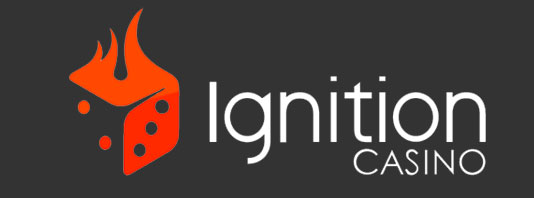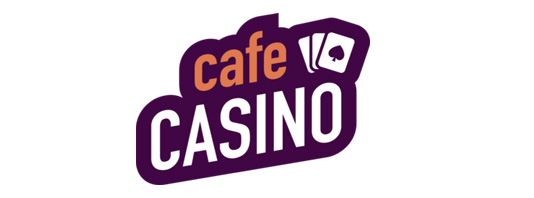- Slots
- Blackjack
- Roulette
- Live Dealer
- Baccarat
- Great selection of slots
- High-quality live dealer games
- Excellent welcome bonus
- Crypto-friendly
- Slots
- Blackjack
- Roulette
- Live Dealer
- Baccarat
- 300+ games
- Crypto-friendly casino
- Live dealer jackpot
- Bonus galore for different verticals
- Slots
- Blackjack
- Roulette
- Live Dealer
- Baccarat
- Accepts cryptocurrencies
- Generous welcome bonus
- Loyalty program
- Kahnawake Licence
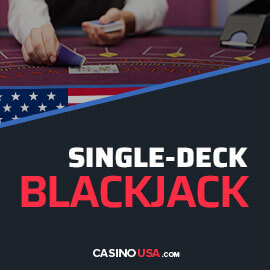
That’s why we made this comprehensive guide in which we will teach you the rules of single-deck blackjack, what things to pay attention to when playing, and what strategies you can apply.
Single Deck Blackjack Rules
Single deck blackjack has several variations, but the game’s object is the same as in any blackjack game — you aim to reach or get as close to 21 without going over it and have a higher hand value than the dealer.
Other rules depend on the exact game variation, but you can generally split a hand up to three times (except for aces with only one split), and the dealer must hit on soft 17. Payouts are also regular, with blackjack paying 3:2, insurance 2:1, and all other winning bets 1:1.
One noticeable feature of single-deck blackjack is dealing the cards face down. This prevents card counting, which is a much more effective strategy when only a single deck is in play.
How to Play Single Deck Blackjack: Tips and Tricks
Every card in single-deck blackjack significantly impacts the game and gives valuable information to the player. This makes it easier to win in single-deck blackjack, but if you know what to do.
Now, a single-deck game generally has a lower house edge than a multi-deck one, but you should be extra careful when picking a game to play. Casinos know this as well, so they may try to lure you in by offering a game with a single-deck but shift some of the other rules in their favor.
For instance, some single-deck games feature a 6:5 on blackjack instead of 3:2. This largely affects the house edge and makes it so you’ll be better off playing an 8-deck 3:2 game than a single-deck 6:5 one.
Another thing that affects the house edge is the insurance bet, raising it to a whopping 5.9%, so you should generally avoid taking it. As for surrender, you can use it in specific scenarios. For instance, surrendering would be the optimal move if you’re holding a pair of 7s while the dealer is showing a 10.
Single Deck Blackjack Strategy Chart for Betting
The number of decks in blackjack affects probability, which is why you can’t apply a single strategy chart to every variation. Single-deck blackjack has its own strategy charts, one for when the dealer hits and the other when they stand on soft 17.
Here’s what they look like.
Single Deck Blackjack Chart: Dealer Hits on Soft 17
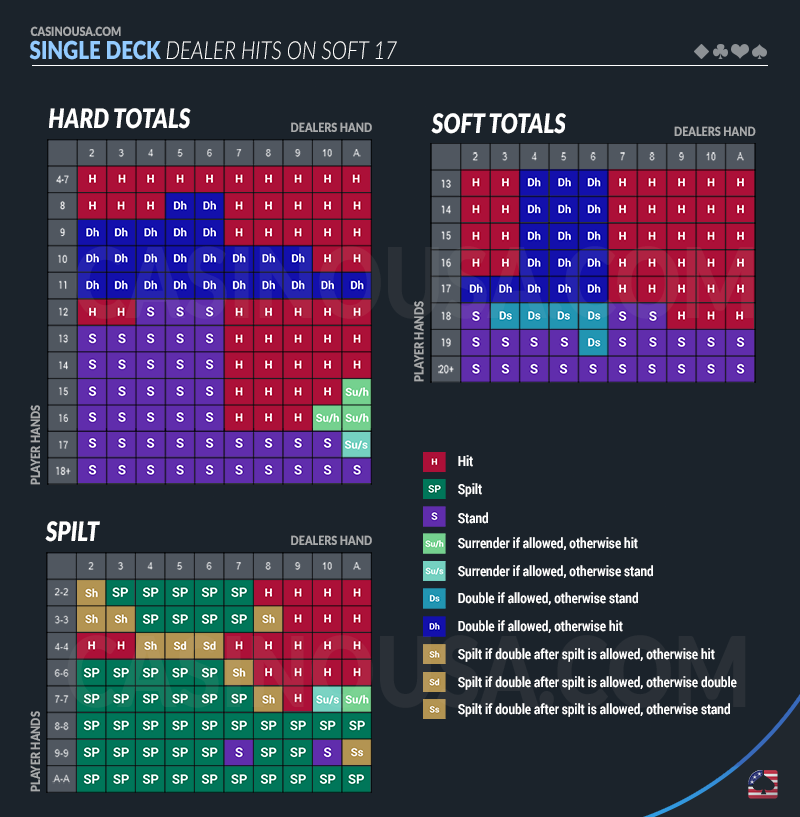
Single Deck Blackjack Chart: Dealer Stands on Soft 17
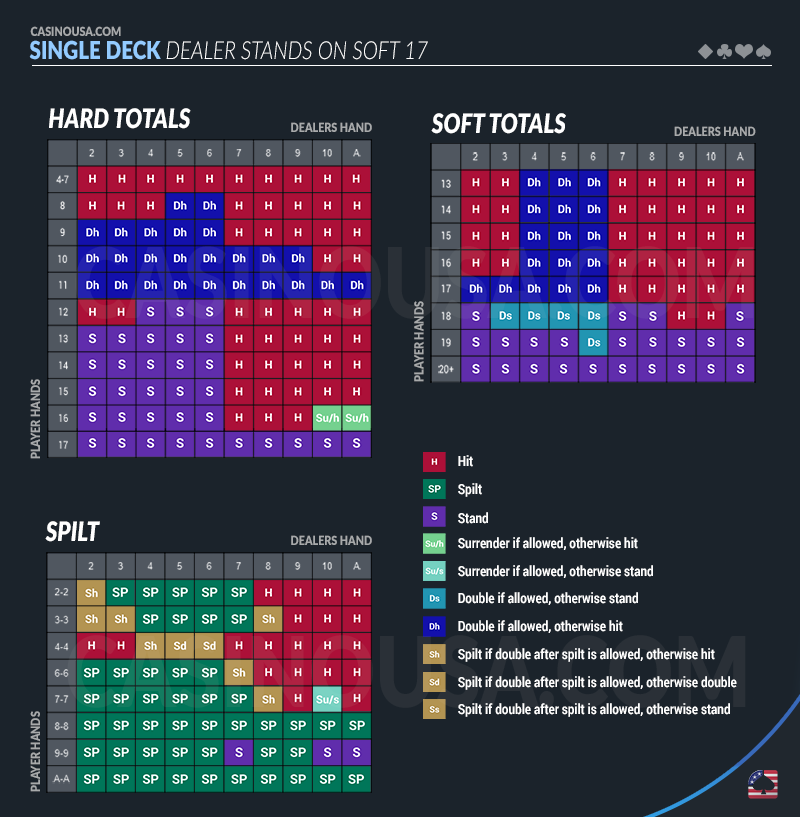
Another strategy you can apply to single-deck blackjack (or virtually any version of the game) is card counting. This strategy helps you recognize opportunities when the odds shift in your favor and considering that there are fewer cards in single-deck blackjack, card counting becomes somewhat easier.
Still, card counting is something you must practice and be careful when applying, as the casinos are not very fond of it. Most land-based casinos stopped offering single-deck blackjack to avoid this problem, so you might have better luck finding it online.
Single vs. Multi-Deck Blackjack
Any game of blackjack that features more than one deck is technically a multi-deck game. Multi-deck blackjack usually has four, six, or eight decks in play. The more decks there are, the harder it becomes for you to count cards and effectively apply a strategy.
That’s why so many players search for single-deck games. When playing optimally, single-deck blackjack has a house edge of just 0.15%, whereas multi-deck games have a house edge of between 0.46% and 0.65%.
Interestingly enough, the house edge in single-deck blackjack is slightly higher than in multi-deck ones (5.9% compared to 5.8%), but insurance is a wrong move, so this should not be a concern.
Lastly, single-deck blackjack leaves more opportunities for doubling down and being aggressive. This is because there are fewer 10-value cards in a single deck, reducing your chances of busting.
Conclusion
Single-deck blackjack is the most advantageous version of blackjack, which is exactly why it’s so difficult to find it. Even if you run into a single-deck game, you must be careful about other rules that might give the house an advantage, like the 6:5 payout we discussed.
In any case, we hope that you’ve learned something new about blackjack while reading this guide. If you wish to learn more, feel free to look for more interesting blackjack topics on our website.
FAQ
- 21+3 Blackjack
- 6:5 Blackjack
- Advanced Strategy
- Atlantic City Blackjack
- Blackjack Bankroll Management
- Blackjack Etiquette
- Blackjack for Beginners
- Blackjack Odds and Probability
- Blackjack Soft Hands
- Blackjack Strategy Simulator
- Blackjack Switch
- Blackjack Terminology
- Blackjack Tournaments
- Blackjack vs. Pontoon
- Blackjack: Online vs. Offline
- Bonus
- Card Counting
- Card Counting Hi-Lo
- Dealer’s Up Card
- Double Attack
- Double Down
- Double Exposure Blackjack
- European
- Face-Up vs. Face Down
- Hard vs. Soft Hands in Blackjack
- Hit or Stand
- Hole Carding
- House Edge
- How to Win
- How to Win Live Blackjack
- Insurance
- Is Online Blackjack Legal in the US?
- Lucky Ladies Side Bet
- Mobile Blackjack
- Multi Deck
- Online Blackjack Rigged
- Online Blackjack vs. Live Blackjack
- Online Strategy
- Perfect Pairs
- Power Blackjack
- Progressive Betting
- Real Money Blackjack
- Rules
- Side Bets
- Soft 17 in Blackjack
- Spanish 21
- Splitting
- Strategy
- Strategy Charts
- Surrender
- Variations
- Zappit

